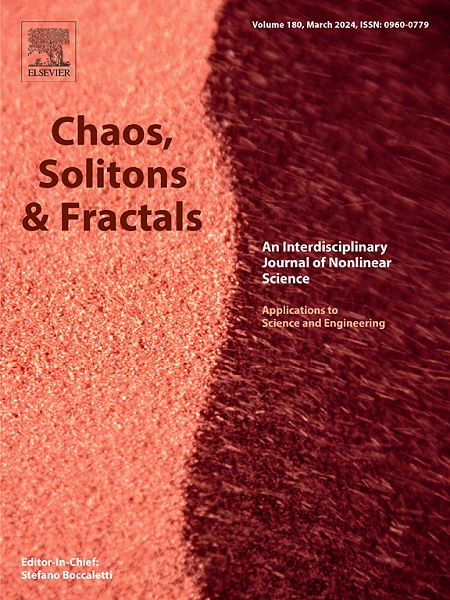具有更新的随机过程的二次相关函数的普遍行为
IF 5.3
1区 数学
Q1 MATHEMATICS, INTERDISCIPLINARY APPLICATIONS
引用次数: 0
摘要
具有更新特性的随机过程,或称半马尔可夫过程,已成为模拟各种现象的强大工具,在这些现象中,假设时间间隔上的事件之间完全独立是不现实的。这些过程的应用涉及多个学科,包括生物学、神经科学、健康科学、社会科学、生态学、气候学、地球物理学、海洋学、化学、物理学和金融学。研究它们的统计特性对于理解复杂系统至关重要。在这里,我们获得了两次相关函数的简单精确表达式,这是更新过程的一个关键描述符,因为它决定了功率谱,并影响着受此类过程影响的系统的扩散特性。虽然已经得出了两次相关函数的结果,但精确表达式只针对某些特定情况进行了评估,例如对于具有 N 个状态的系统,最简单的情况是二分方案。通过对轨迹变现进行平均,我们得到了两次相关函数的通用结果,它与跳跃统计无关,前提是方差是有限的。在达到渐进静止的标准假设下,即等待时间衰减为 t-μ,μ>2,我们证明静止性只取决于第一个时间 t1,即与准备时间的时间距离,而时间差 t2-t1 并不重要。对于无法实现静止的系统(1<μ<2),我们提供了大 t1 时相关函数的普遍渐近形式,从而扩展了之前局限于特定时差状态的结果。我们研究了更新过程的两种解释:射击噪声和阶跃噪声,它们与一般连续时间随机漫步和具有随机速度的莱维漫步等物理系统相关。虽然这项研究的重点是两次相关性,但简单的方法可推广到 n 次相关性,为未来研究更新过程的统计力学提供了途径。本文章由计算机程序翻译,如有差异,请以英文原文为准。
Universal behavior of the two-times correlation functions of random processes with renewal
Stochastic processes with renewal properties, or semi-Markovian processes, have emerged as powerful tools for modeling phenomena where the assumption of complete independence between temporally spaced events is unrealistic. These processes find applications across diverse disciplines, including biology, neuroscience, health sciences, social sciences, ecology, climatology, geophysics, oceanography, chemistry, physics, and finance. Investigating their statistical properties is crucial for understanding complex systems. Here we obtain a simple exact expression for the two-times correlation function, a key descriptor of renewal processes, as it determines the power spectrum and impacts the diffusion properties of systems influenced by such processes. Although results for the two-times correlation function have been derived, the exact expression has been evaluated only for some specific cases, as for systems with states notably the simplest is the dichotomous scenario. By averaging over trajectory realizations, we obtain a universal result for the two-times correlation function, independent of the jump statistics, provided the variance is finite. Under the standard assumption for reaching asymptotic stationarity, where waiting times decay as with , we show that stationarity depends solely on the first time , i.e., the time distance from the preparation time, while the time difference is inconsequential. For systems where stationarity is unattainable (), we provide a universal asymptotic form of the correlation function for large , extending previous results limited to specific time difference regimes. We examine two interpretations of renewal processes: shot noise and step noise—, relevant to physical systems such as general Continuous Time Random Walks and Lévy walks with random velocities. While this study focuses on two-times correlations, the simple methodology is generalizable to -times correlations, offering a pathway for future research into the statistical mechanics of renewal processes.
求助全文
通过发布文献求助,成功后即可免费获取论文全文。
去求助
来源期刊

Chaos Solitons & Fractals
物理-数学跨学科应用
CiteScore
13.20
自引率
10.30%
发文量
1087
审稿时长
9 months
期刊介绍:
Chaos, Solitons & Fractals strives to establish itself as a premier journal in the interdisciplinary realm of Nonlinear Science, Non-equilibrium, and Complex Phenomena. It welcomes submissions covering a broad spectrum of topics within this field, including dynamics, non-equilibrium processes in physics, chemistry, and geophysics, complex matter and networks, mathematical models, computational biology, applications to quantum and mesoscopic phenomena, fluctuations and random processes, self-organization, and social phenomena.
 求助内容:
求助内容: 应助结果提醒方式:
应助结果提醒方式:


